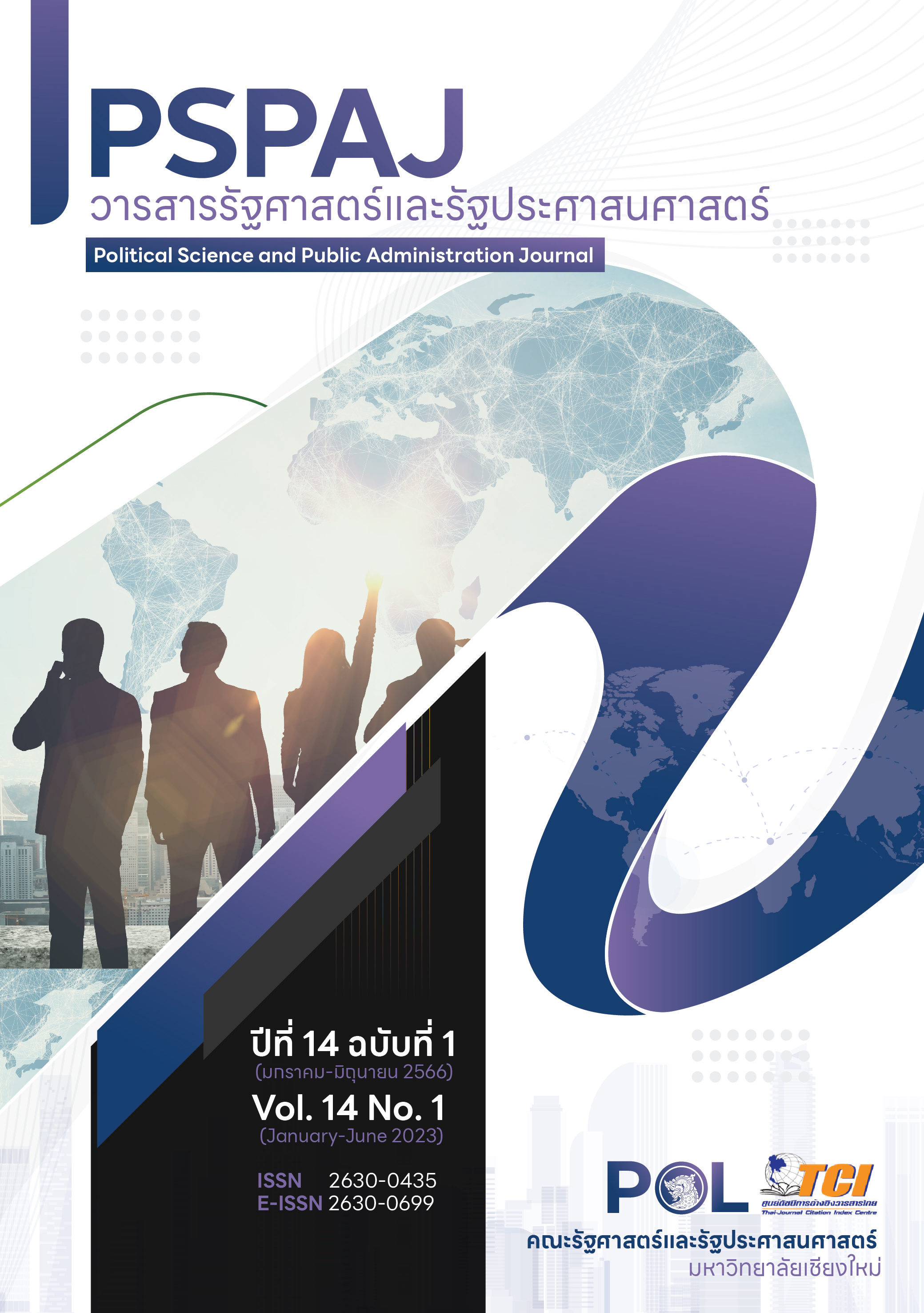The Foresight of Laem Chabang Municipality and Restructuring Guidelines for Eastern Economic Corridor (EEC)
Main Article Content
Abstract
The Eastern Economic Corridor (EEC) is the most important megaproject of Thailand in this decade. This project is an expansion of the development of major industries and their relevance which has been known for more than 30 years, also known as the Eastern Seaboard. The EEC focuses on transforming both physical and social development to increase the country's competitiveness. Laem Chabang is one of the key areas of the EEC with the most important deep seaports. Even though the emergence of the EEC will make the local administrative regulations of Laem Chabang Municipality more flexible, with regard to facilitating investment in the promoted industrial sector, Laem Chabang Municipality often faces the other problems that come after these developments, especially the hinterland which is a large scale of the community. This makes the shortage of public service management such as well-being infrastructure, sewage, pollution, non-resident population problems. However, there are still a number of regulations that Laem Chabang can apply in the same way as other municipalities. This article provides guidelines for the management of public services, including policy recommendations to improve the regulations of public administration that cannot meet the needs of people in areas with special economic characteristics. This research used foresight technique to create a scenario of the future of Laem Chabang Municipality based on interview data through a sweeping process and brainstorming from experts and people involved in local administration. Use the visualization techniques to prepare for the management of public affairs and the provision of infrastructure to support the upcoming socio-economic activities. The guidelines for enhancing the administrative capacity of Laem Chabang Municipality to be in line with the EEC development are as follows: 1) Change the administrative structure, powers and duties, and the relationship between government agencies. by using the power of the Eastern Special Development Zone Policy Committee and 2) the addition of new government agencies in the administrative structure. and an increase in investment promotion positions using the current law.
Article Details

This work is licensed under a Creative Commons Attribution-NonCommercial-NoDerivatives 4.0 International License.
- เนื้อหาและข้อมูลที่ลงตีพิมพ์ในวารสารรัฐศาสตร์และรัฐประศาสนศาสตร์ถือเป็นข้อคิดเห็นและความรับผิดชอบของผู้เขียนบทความโดยตรง ซึ่งกองบรรณาธิการวารสารรัฐศาสตร์และรัฐประศาสนศาสตร์ ไม่จำเป็นต้องเห็นด้วย หรือร่วมรับผิดชอบใดๆ
- บทความและข้อมูล ที่ได้รับการตีพิมพ์ในวารสารรัฐศาสตร์และรัฐประศาสนศาสตร์ ถือเป็นลิขสิทธิ์ของวารสาร หากบุคคลหรือหน่วยงานใดต้องการนำข้อมูลไปใช้ประโยชน์ในทางวิชาการ ขอให้อ้างอิงแหล่งที่มาด้วย
References
DDproperty. (2561). ผ่าพื้นที่ EEC ข้อดี-ข้อเสียที่ประเทศไทยจะได้รับ. Forbes Thailand. สืบค้นเมื่อ 5 มิถุนายน 2564, จาก https://forbesthailand.com/commentaries/insights/eastern-economic-corridor-eec.html
นิติบดี ศุขเจริญ. (2562). การมองอนาคต Foresight. วารสารมนุษยศาสตร์และสังคมศาสตร์ มหาวิทยาลัยราชภัฏมหาสารคาม, 13(3), 33-42.
พีรสิทธิ์ คำนวณศิลป์ และคณะ. (2564). การออกแบบโครงสร้างทางการบริหารแหลมฉบังเพื่อรองรับเขตพัฒนาพิเศษภาคตะวันออก. กรุงเทพฯ: สำนักงานการวิจัยแห่งชาติ และสถาบันคลังสมองของชาติ.
มนนภา เทพสุด. (2562). ภาวะโลกร้อน: ปัญหาที่ท้าทายในศตวรรษที่ 21. ใน การประชุมวิชาการระดับชาติและนานาชาติ มหาวิทยาลัยศรีปทุม ครั้งที่ 13 ประจำปี 2561 (น. 2558-2567). กรุงเทพฯ: มหาวิทยาลัยศรีปทุม.
ศุภเจตน์ จันทร์สาส์น. (2555). การเปลี่ยนแปลงโครงสร้างประชากรและความท้าทายในการพัฒนาเศรษฐกิจและสังคมของประเทศไทย. วารสารนักบริหาร, 32(3), 3-11.
สำนักงานคณะกรรมการนโยบายเขตพัฒนาพิเศษภาคตะวันออก (2564ข). โครงสร้างพื้นฐาน. สำนักงานคณะกรรมการนโยบายเขตพัฒนาพิเศษภาคตะวันออก. สืบค้นเมื่อ 25 กันยายน 2564, จาก https://www.eeco.or.th/th/comprehensive-infrastructure?sec=infrastructure
สำนักงานคณะกรรมการนโยบายเขตพัฒนาพิเศษภาคตะวันออก. (2564ก). สกพอ. จับมือ BOI TARA และ TRUE เดินหน้ายกระดับภาคอุตสาหกรรมไทยสู่ industry 4.0 ด้วยเทคโนโลยี 5G ในพื้นที่อีอีซีสำนักงานคณะกรรมการนโยบายเขตพัฒนาพิเศษภาคตะวันออก. สืบค้นเมื่อ 25 กันยายน 2564, จาก https://www.eeco.or.th/th/news/362
อภิวัฒน์ รัตนวราหะ. (2564). อนาคตศึกษา. กรุงเทพฯ: สำนักงานคณะกรรมการส่งเสริมวิทยาศาสตร์ วิจัยและนวัตกรรม (สกสว).
Dijkstra, L., & Poelman, H. (2014). Regional Working Paper 2014: A Harmonised Definition of Cities and Rural Areas: The New Degree of Urbanisation. N.P. European Commission Directorate-General for Regional and Urban Policy.
Frost & Sullivan. (n.d.). Urbanization: City as a Customer. Retrieved August 31, 2021, from https://www.frost.com/research/visionary-innovation/mega-trends/urbanization-city-customer/
International Renewable Energy Agency. (2018). Renewable power generation costs in 2018. N.P.: IRENA.
Jones, B. F., & Olken, B. A. (2008). The Anatomy of Start-stop Growth. The Review of Economics and Statistics, 90(3), 582-587.
Wood, J. (2020). What Will the Future Look Like by 2050 If It’s Powered by Renewables? World Economic Forum. Retrieved February 28, 2022, from https://www.weforum.org/agenda/2020/02/renewable-energy-future-carbon-emissions/


